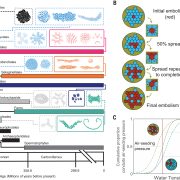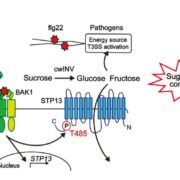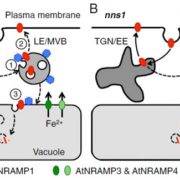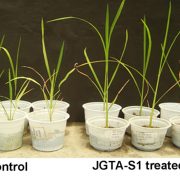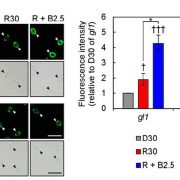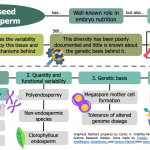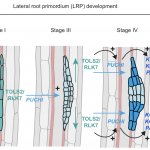Review. Plant nutrition for human nutrition: Hints from rice research and future perspectives
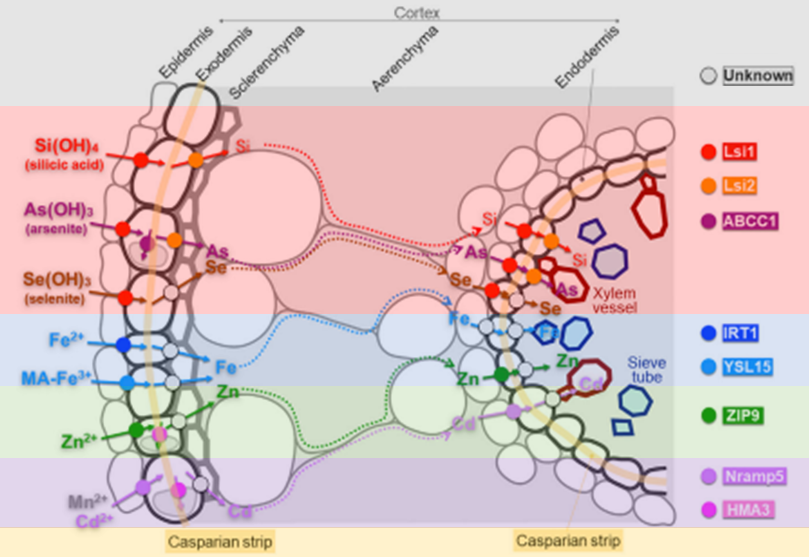 Among all the mineral elements transported from the soil to the plant, cadmium (Cd) and arsenic (As)- are toxic for all organisms whereas 13 micronutrients, including iron (Fe) and zinc (Zn), are beneficial for both human and plant nutrition. Ideally, food crops should accumulate fewer soil contaminants but more essential elements in their edible portions. This is particularly important for diets based on cereals, as low amounts and low bioavailability of mineral elements in the grains can lead to micronutrient deficiency in humans, causing serious health problems. In this article, Huang and colleagues review the most significant mineral element transporters identified in rice and discuss their manipulation to produce healthy and safe food. As an example, overexpression of the Heavy Metal ATPase OsHMA3 leads to increased Cd sequestration in root cell vacuoles, resulting in decreased Cd translocation to the shoot and reduced Cd accumulation in seeds. The authors also highlight challenges related to the strict mechanisms controlling homeostasis of mineral elements, as altering their accumulation to meet the requirements for human nutrition might be detrimental for plant growth. However, alternative strategies could overcome this problem. Indeed, mutations in the SULTR-type proton-phosphate symporter OsSPDT lead to decreased levels of phytic acid (a strong Fe and Zn chelator) and consequently to increased bioavailability of these essential elements in rice grains without yield penalty. The authors conclude that a comprehensive understanding of the entire transport system is the first step towards obtaining novel cereal crops with improved nutritional value and reduced toxicity. (Summary and image adaptation by Michela Osnato @michela_osnato) Mol. Plant 10.1016/j.molp.2020.05.007
Among all the mineral elements transported from the soil to the plant, cadmium (Cd) and arsenic (As)- are toxic for all organisms whereas 13 micronutrients, including iron (Fe) and zinc (Zn), are beneficial for both human and plant nutrition. Ideally, food crops should accumulate fewer soil contaminants but more essential elements in their edible portions. This is particularly important for diets based on cereals, as low amounts and low bioavailability of mineral elements in the grains can lead to micronutrient deficiency in humans, causing serious health problems. In this article, Huang and colleagues review the most significant mineral element transporters identified in rice and discuss their manipulation to produce healthy and safe food. As an example, overexpression of the Heavy Metal ATPase OsHMA3 leads to increased Cd sequestration in root cell vacuoles, resulting in decreased Cd translocation to the shoot and reduced Cd accumulation in seeds. The authors also highlight challenges related to the strict mechanisms controlling homeostasis of mineral elements, as altering their accumulation to meet the requirements for human nutrition might be detrimental for plant growth. However, alternative strategies could overcome this problem. Indeed, mutations in the SULTR-type proton-phosphate symporter OsSPDT lead to decreased levels of phytic acid (a strong Fe and Zn chelator) and consequently to increased bioavailability of these essential elements in rice grains without yield penalty. The authors conclude that a comprehensive understanding of the entire transport system is the first step towards obtaining novel cereal crops with improved nutritional value and reduced toxicity. (Summary and image adaptation by Michela Osnato @michela_osnato) Mol. Plant 10.1016/j.molp.2020.05.007


